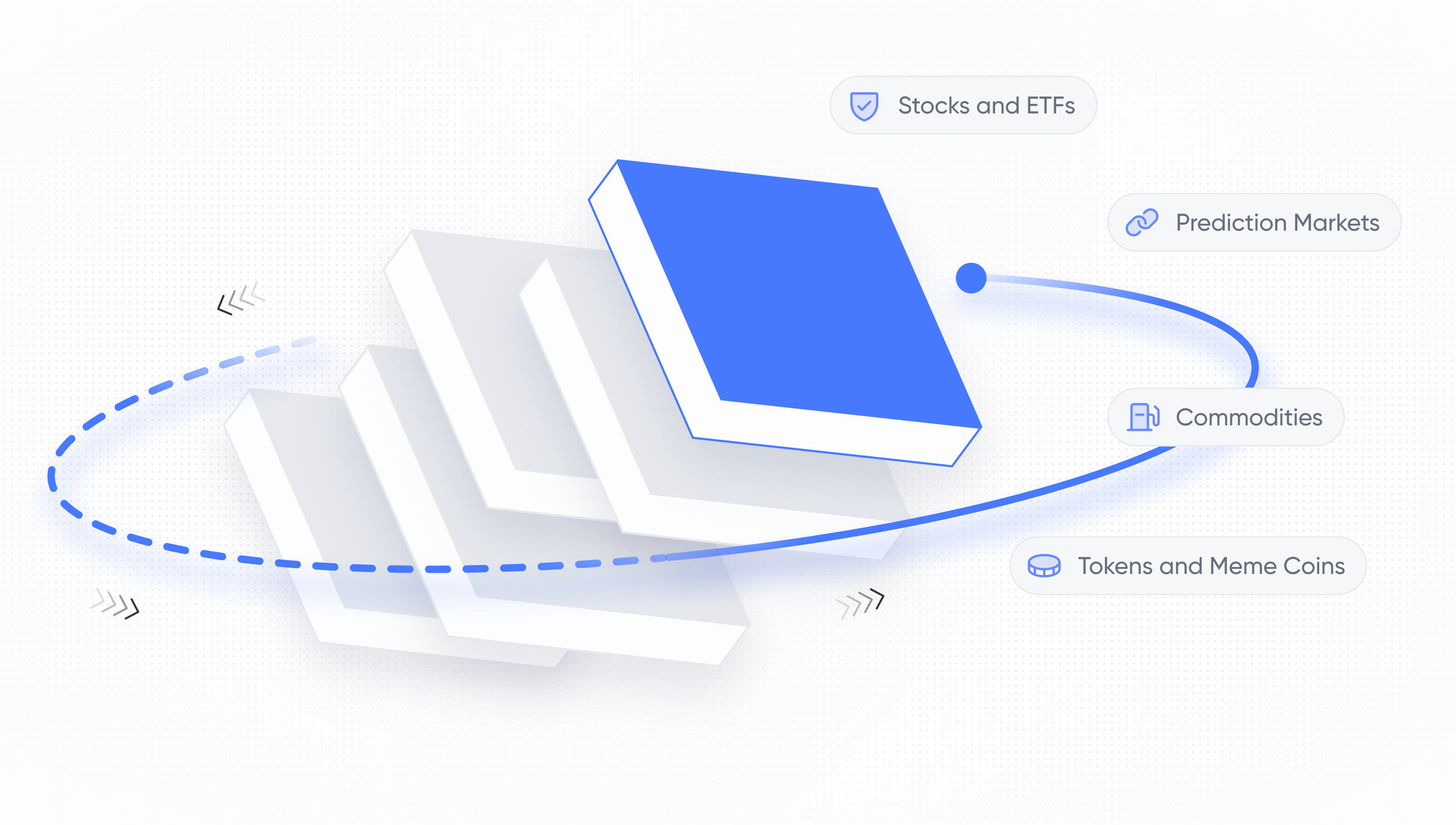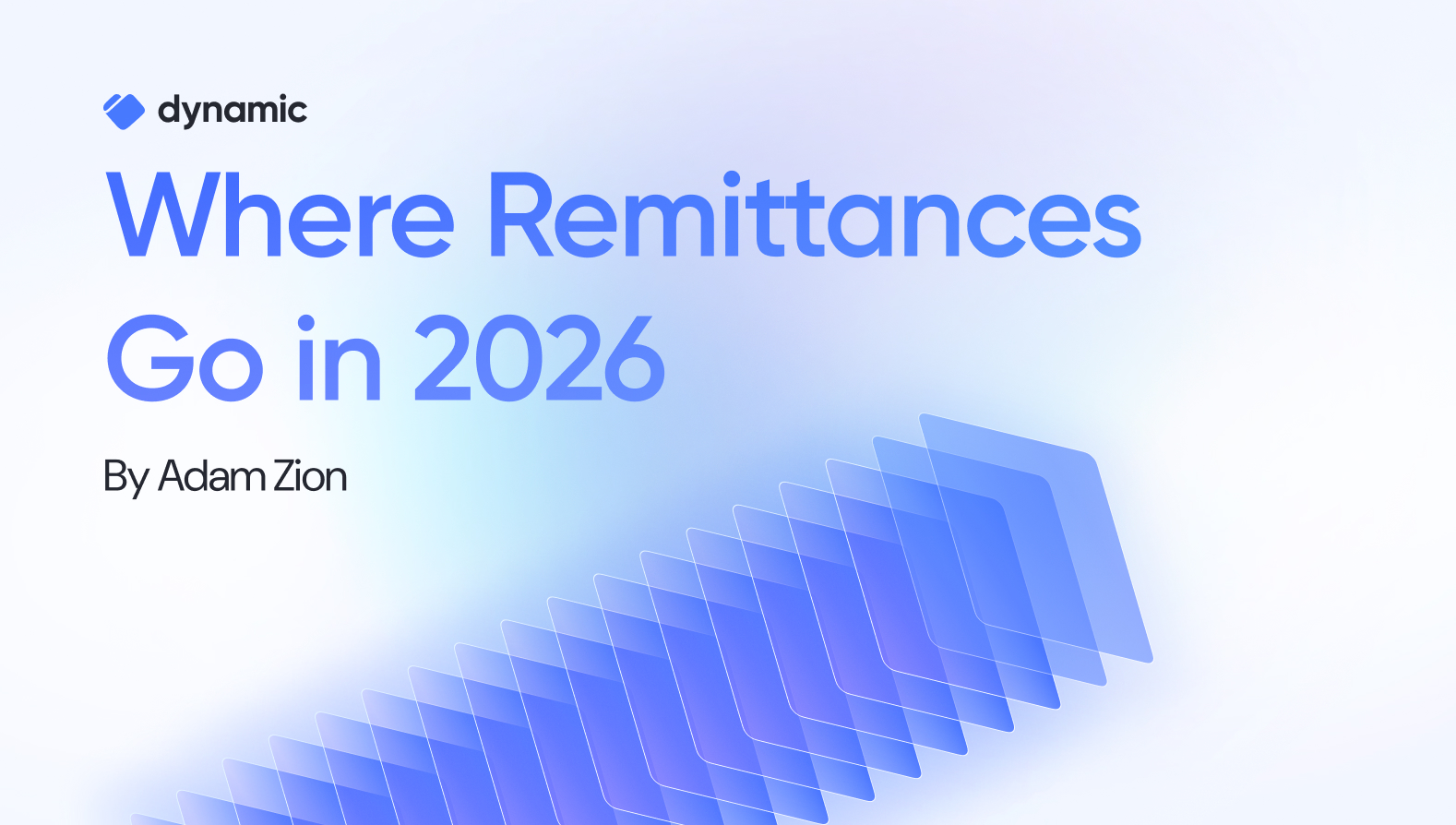The “Everyone Gets a Chain” Economy


Main Points
- Projects are increasingly launching their own chains to meet specific demands and use cases. This trend moves away from single-chain dominance and has become far more attainable than in the past, thanks to advancements in interoperability and chain abstraction.
- The emergence of rollup-as-a-service solutions has reduced technical complexities, allowing projects of all sizes to create scalable and specified blockchains without extensive resources or expertise.
- Dynamic has always focused on a multi-chain future and strongly believes we're moving toward a world where every application has its own chain. We share this thesis and other predictions below!
Introduction
The days of a single chain being thought of as the gold standard are coming to an end. Instead, more chains than ever are launching and the focus has shifted to creating an interoperable environment to accommodate this multi-chain future. We touched on this trend last month, with a write up dedicated to solely the rapidly changing layer-2 landscape. However, layer-2 (L2) blockchains are only a small piece of the puzzle.
As demand continues to grow for customized, scalable, and modular blockchain architectures, concepts like Rollapps, Appchains, and Rollups have emerged alongside L2s. These innovations aren’t just about creating faster and cheaper transactions; they also provide more flexibility to developers, while also enhancing user experience. As modular chains set a new standard for our industry, let’s take a closer look at the emerging leaders and innovations moving us toward a world where everyone has their own chain.
Breaking Down Key Terms
First things first, let’s set the stage with a few key terms to know:
- Rollups: Rollups are another term for Layer-2 blockchains, which have established themselves as the most popular scaling solution to date, particularly for Ethereum. By processing transactions off-chain and then settling them in batches on the main chain, Rollups enable faster, lower-cost transactions while leveraging the security of the settlement layer.
- Rollapps: Rollapps offer a more customizable approach to blockchain scalability, allowing developers to tailor their chain's parameters to specific use cases, whether for gaming, DeFi, or privacy-centric applications. Rollapps are paving the way for apps to function independently while anchored to a secure base layer, such as Ethereum or Solana.
- Appchains: By allowing individual applications to run on their own chain, Appchains can tailor transaction speeds, fees, and other parameters to fit their unique demands, creating a more flexible and dedicated environment for apps. Unlike Rollapps, which are anchored to a secure base layer like Ethereum or Solana, Appchains operate as fully independent chains, offering even greater customization and autonomy at the cost of added responsibility for their own security and infrastructure.
- Rollups-as-a-Service: Rollup-as-a-service (RaaS) providers make it feasible for more projects to adopt rollups by abstracting away the technical difficulties involved, making a scalable chain solution accessible to a wider audience. By lowering the level of complexity needed to deploy rollups, RaaS providers allow anyone to launch and manage a chain with ease.
Our Thoughts: Will Everybody Have Their Own Chain?
Today, there are more than hundreds of chains in the crypto sphere, with the majority of these networks launching in the last year or two. In addition to new entrants entering the sector, we’ve also seen a lot of existing protocols (Swell), exchanges (Kraken), and trading apps (Hyperliquid) announce their own chains. This highlights a question that we have been pondering at Dynamic: Will every project ultimately have its own chain? To us, the answer is increasingly looking like yes.
In 2024, launching a project-specific chain no longer carries the scalability and resources it once required. Offerings like rollup-as-a-service providers have greatly simplified chain creation, making it more accessible than ever before. As these technical barriers fade, the vision of each project deploying its own chain is shifting from an ambitious goal to a practical reality. With high levels of personalization and operational control, these custom-built chains are designed to meet targeted user bases and specific business needs.
In addition to the ease of launching new chains, advancements in chain abstraction and interoperability have made it seamless for users to navigate a multi-chain ecosystem. Chain abstraction simplifies interactions, allowing users to move across chains effortlessly. Combined with interoperability—which enables smooth communication and data sharing across networks—this abstraction fosters an ecosystem where projects can innovate freely, and users can operate without being confined to a single chain.
The Key Players Accelerating this Trend
The simplicity of launching a new chain today is a major factor behind our belief that everyone will eventually have their own. Here are four projects that stand out for their unique contributions to driving this change:
Conduit
Conduit enables projects to deploy rollups that are application-specific, allowing for custom functionality while leveraging the security of established base layers, such as Ethereum. By streamlining the entire rollup deployment process, Conduit makes it easy for teams to launch their own scalable chains without needing extensive technical resources. In addition to accessibility, Conduit’s toolset is quick and easy to implement, empowering teams to innovate in real time and bring unique applications to market faster than ever.

Dymension
Dymension allows developers to design rollups that prioritize cross-chain interactions, addressing one of the biggest challenges in Web3: interoperability. This approach ensures that data and assets can move freely across different chains without sacrificing the speed or security of the network.
By using a modular architecture that seamlessly connects Rollapps, Dymension Hub, and DA Networks, Dymension’s architecture connects the front-end, back-end, and database layers to facilitate efficient and secure cross-chain interactions:

Altlayer
Altlayer offers a suite of rollup solutions focused on high scalability, while providing options for custom chain parameters. Altlayer’s modular structure gives developers the freedom to customize chain parameters, aligning infrastructure closely with their project goals. By focusing on adaptability, Altlayer allows projects to scale thoughtfully, balancing performance with personalized solutions.
Here’s a look at Altlayer’s modular framework in action:

Caldera
Caldera operates similarly to Conduit, providing frameworks for developers to build customized rollups, with a focus on flexibility and ease of deployment. However, Caldera places a strong emphasis on modularity, allowing developers to configure key components of their rollups such as data availability and consensus. While Conduit centers on application-specific rollups, Caldera’s setup allows for even more detailed customization, ideal for teams needing unique network configurations

In summary here’s how each of these four compares:

Industry Insights - Breaking Down Predictions
In this section, we cover three predictions about where this trend could be heading, courtesy of Andy and our co-founder Itai. Andy is the co-founder of The Rollup, a media company focused on the emerging trends highlighted in this blog. Andy and Itai raise some interesting ideas, which we explore further below.
Prediction 1: The Rise of Appchains

This forecast directly aligns with the thesis that we stated above: as supporting infrastructure continues to develop, purpose-built chains are quickly becoming the ideal environment for breakthrough applications. Unlike general purpose base layers, specialized chains enable developers to fine-tune parameters according to specific use cases, whether in gaming, DeFi, or privacy.
This shift enables each project to optimize performance and user experience on its own terms, with Rollup-as-a-Service providers now making chain deployment more accessible than ever. And as interoperability and chain abstraction continue to improve, users will be able to move across chains seamlessly, making appchains not just possible but very practical.
Prediction 2: Value Accrual to Applications

Andy envisions a future where value shifts toward applications rather than the underlying chains. He feels that as more appchains emerge, apps will begin to earn a larger share of revenue thanks to governance models and protocols specifically structured to support them. This hypothesis fits well with the multi-chain future we've discussed, pointing to a new phase in which apps gain more independence and a direct role in shaping blockchain infrastructure.
Prediction 3: Building on Your Own Terms
Itai strongly believes that appchains and purpose-built chains will soon become the preferred choice for projects wanting full control over their infrastructure. As chain abstraction advances, the benefits of owning customized blockspace become increasingly compelling. By creating an ecosystem beyond a single app or wallet, these projects can boost revenue by capturing MEV and controlling sequencing.
Beyond revenue, creating an ecosystem also allows developers to build deeper relationships with their end-users, and keep their brand front and center. Embracing dedicated chains also empowers them to tailor privacy, performance, and compliance features to align with their unique goals and user needs. Ultimately, this gives developers complete control over their environment.
Why Does this Trend Matter?
The shift towards modular blockchains and a multi-chain landscape isn’t just a technical evolution, it’s a foundational change with major implications for the industry. Here are several reasons why we think this trend is so important:
- Scalability: Scalability has been a major hurdle for blockchains, which often struggle to balance it with security and decentralization. By processing transactions on specialized chains or off of mainnet in the case of rollups, networks avoid congestion and can support more users, transactions, and data without impacting the performance of the base layer.
- Developer Flexibility: Developers can choose specific parameters and structures that best suit their needs, enabling customization. This flexibility allows them to optimize their chains for specific use cases, such as high frequency trading or gaming.
- Interoperability: As chains become more interconnected, assets, data, and users can transfer seamlessly across them. This connectivity enhances the experience for end-users by providing a unified interface and enables developers to create projects that can seamlessly integrate with other networks.
- Lower Barriers for Adoption: With Rollup-as-a-service providers, projects of all sizes can now deploy customized chains without extensive resources. This opens the door for a wider range of innovative projects and ideas to emerge.
Share this article




